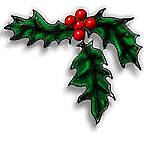The time of the winter solstice is the darkest of the year. It’s not just the shortest day of the year, but it’s also often cloudy, cold, and wet. It’s really a miserable time of the year, so it’s no wonder cultures around Europe (and I’m sure much of the rest of the world) would have a party around this time.
We are most familiar with Christmas, so let’s look at some of the origins of the various Christmas traditions:
- Gift giving – Roman Saturnalia
- Greenery – Roman New Year
- Lights – Roman New Year
- Charity – Roman New Year
- Feasting – Germanic Pagans
- Yule Log – Germanic Pagans
- 12 Days of Yule (Christmas) – Germanic Pagans
- Mistletoe – Druids
- Santa Claus – Norse god Odin
- Elves – Norse mythology
- December 25 – Mithra’s Birthday
The Christian Church faced many struggles with the conversion of the Germanic tribes and certain elements of of the Roman Empire. One of these struggles was with very strong solstice traditions that they just couldn’t break. So they adopted many elements of the pagan holidays and even the day of Mithraism’s highest holiday (also the day for several other holidays), and identified it as Christ’s Mass, or Christmas.
It really is the perfect blending of the most popular elements of many holidays, enough so that it’s hardly recognizable as a religious holiday. Christmas really is the perfect holiday.
Of course spending time with family is the most important part of the holiday. However, if you need to cope with too much family or not enough, it’s nothing a nice stiff glass of holiday cheer can’t help with.
That being said, I wish you all a Merry Christmas!

